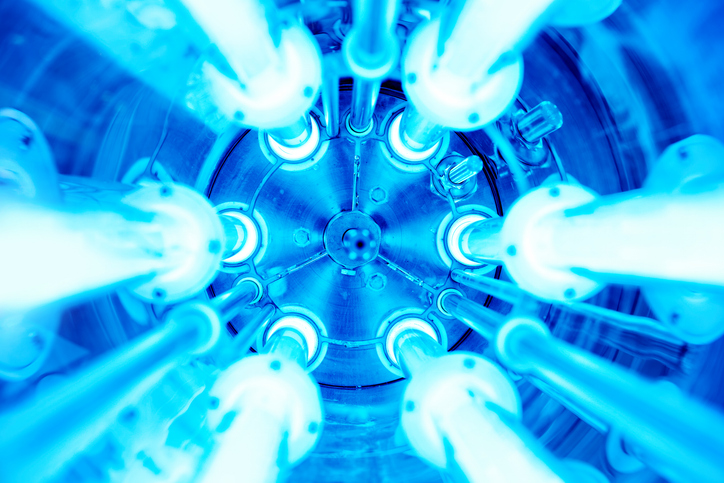Wastewater treatment is a critical process that removes contaminants and pathogens from water before reuse or reintroduction into the environment. Disinfection is among the crucial steps in wastewater treatment, which targets harmful microorganisms to prevent the spread of waterborne diseases. This article reviews the importance of wastewater treatment and common disinfection methods such as chlorine, UV light, and ozone.
Methods of Disinfection
Wastewater disinfection methods range from conventional to the application of new technologies. Chlorine, UV light, and ozone are the most popular methods, each with unique features.
Wastewater Disinfection Using Chlorine
Chlorination is one of water treatment plants’ oldest and most widely used wastewater disinfection methods. Moreover, the process entails the addition of chlorine-based compounds to wastewater to kill harmful microorganisms. These compounds include chlorine gas, sodium hypochlorite, and calcium hypochlorite. After adding any of these compounds to the wastewater, it reacts to form hypochlorous acid and hypochlorite ions. These chemical species are highly reactive, so they effectively destroy the cellular structures of microorganisms like bacteria and protozoa. They achieve this by disrupting the cell membranes and enzymatic processes, thus rendering the microorganisms inactive and unable to reproduce.
One key aspect of this process is determining the correct chlorine dosage, which ensures effective disinfection. Proper dosage also prevents the formation of harmful by-products. The correct dosage depends on factors like the concentration and the type of organic matter present in the wastewater. Measuring parameters such as pH and conductivity of the wastewater can help quantify these factors. At AlpHa, we offer standard and customizable measurement options such as our In-Line PTSA Sensor Portfolio and In-Line Chlorine Sensor Portfolio.
Advantages
- Effectiveness: Chlorine is highly effective at killing many pathogens, including bacteria, protozoa, and viruses. As a result, it helps to protect public health by reducing the risk of waterborne diseases.
- Versatility: Chlorination can disinfect various types of wastewater, such as municipal sewage, industrial effluents, and agricultural runoff. Moreover, it suits smaller decentralized systems and large-scale treatment plants.
- Cost Effectiveness and Ease of Application: Chlorine disinfection of wastewater is inexpensive compared to other methods, and chlorine compounds are readily available in markets globally.
Disadvantages
- Formation of Disinfection By-Products: When chlorine reacts with organic matter in wastewater, trihalomethanes, and chloramines, which are potential carcinogens, can form. These by-products can also have adverse environmental impacts. Avoiding this requires careful control of chlorine dosage and, in some scenarios, additional treatment to remove or mitigate these by-products.
- Environmental Concerns: If discharged into surface water without treatment, chlorine can adversely impact aquatic ecosystems. As a result, it is necessary to minimize chlorine residuals and prevent leakage from the disinfection system. Also, chlorine gas poses risks to workers and nearby communities due to its toxic and corrosive properties. So, there is a need for proper ventilation, storage, and handling in treatment plants.
- Limited Efficacy: Chlorine is ineffective against certain pathogens, such as Cryptosporidium and Giardia, which are common in sewage wastewater. So, to combat these, alternative disinfection methods may be required.
Wastewater Disinfection Using UV Light
This method entails exposing wastewater to ultraviolet (UV) radiation from UV lamps installed within reactors. Generally, UV light at wavelengths between 200 and 300 nm is the most effective at damaging the DNA and RNA of microorganisms, thus preventing them from reproducing and causing infections. Other factors that influence the effectiveness of this process include the intensity of the radiation, wastewater flow rate through the reactor, and the reactor configuration.
Advantages
- No Environmental Footprint: UV disinfection of wastewater is environmentally friendly, unlike methods that involve the use of chemicals.
- Broad-Spectrum Efficacy: UV disinfection is effective against many microorganisms, including Cryptosporidium and Giardia, which are resistant to chlorine disinfection.
- Rapid Disinfection: Requires a shorter contact time (20 to 30 seconds) compared to alternative methods.
Disadvantages
- Reliance on Turbidity: UV disinfection may be less effective in turbid waters or when there are high levels of suspended solids. This is because particles and organic matter can absorb or scatter UV light, thereby reducing its penetration depth. So, it may be necessary to carry out pretreatment processes like filtration and settling.
- No Residual Effect: Unlike chemical disinfectants, UV light has no residual effect on the treated water. As a result, it is less effective against fecal coliforms such as E. coli, which can repair themselves under certain conditions. These conditions could occur during prolonged exposure to visible light (photoreactivation) or in the absence of light (dark repair).
Disinfecting Wastewater Using Ozone
Ozone gas is a powerful oxidizing agent that breaks down cell walls and membranes of microorganisms. In addition, it oxidizes organic compounds, leading to their decomposition into simpler, less harmful substances. A typical ozone disinfection process begins with generating the gas using ozone generators. Then, it is introduced into the wastewater either in gas form or as ozone-enriched water through diffusers or injectors. After treatment, any remaining ozone is decomposed or removed using destructors or off-gas treatment systems to prevent residuals from entering the environment.
Advantages
- Possesses high biocidal power in a broad microbial spectrum. It also destroys and removes algae.
- It requires short contact time so that germs can be terminated within seconds.
- No impact on odor or taste.
Disadvantages
- It is unstable at atmospheric pressure, so it needs to be generated onsite.
- Toxic in high concentrations, as it is a greenhouse gas.
- Although ozone decomposes into oxygen after treatment, it can react with certain organic compounds to form harmful by-products. These by-products include aldehydes, ketones, and organic acids that can cause kidney cancer.
Exploring Disinfection Solutions with AlpHa
Selecting the right disinfection method entails considering several factors like effectiveness, cost, environmental impact, and ease of implementation. For example, chlorine disinfection is effective, affordable, and easy to implement, which is why it is currently the most popular. However, it is limited against certain pathogens, and may produce harmful by-products, if not properly managed. On the other hand, UV disinfection offers a rapid and chemical-free approach, but may be less effective in turbid waters. While ozone disinfection, which tends to be the most effective, requires significant investment in equipment and maintenance.
Our team at AlpHa is here to guide you in setting up the most efficient and cost effective wastewater disinfection method for your application. We also offer both standard and customizable measurement options such as our In-Line PTSA Sensor Portfolio and In-Line Chlorine Sensor Portfolio.




